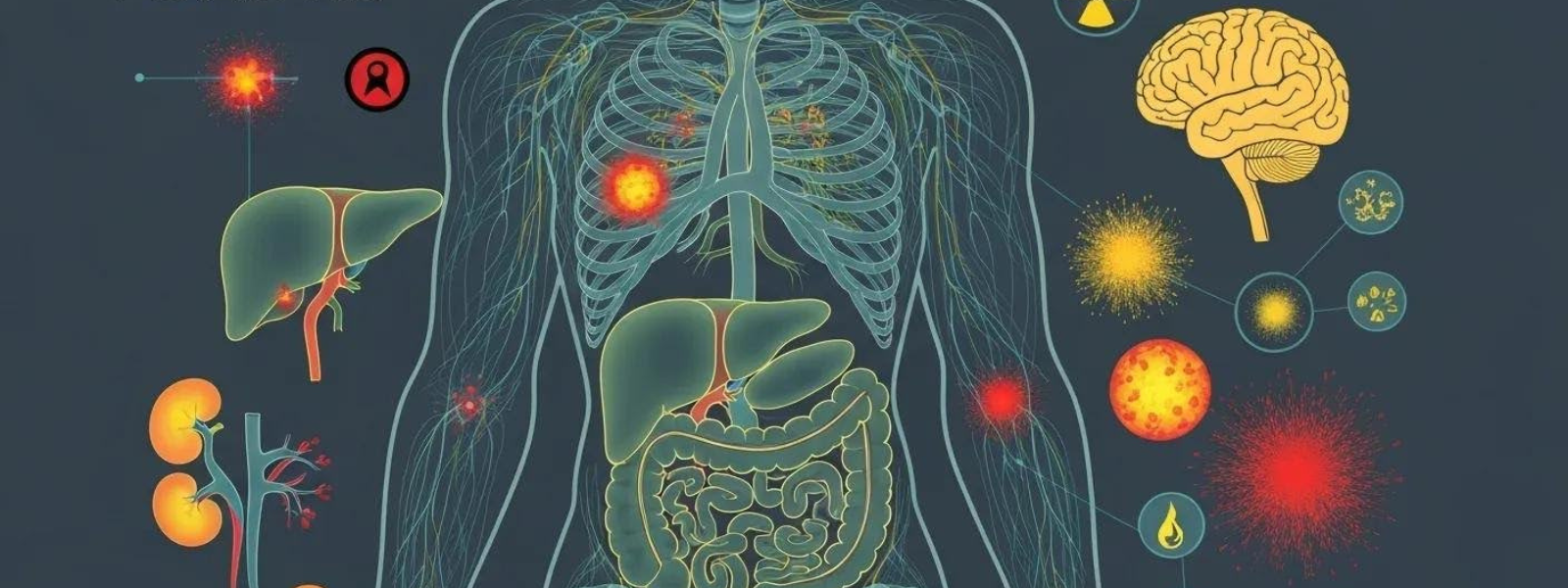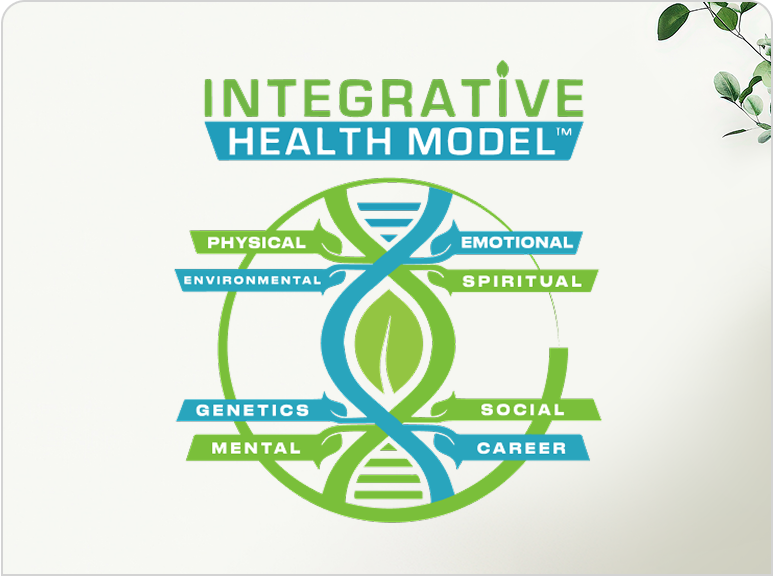5 Common Toxins That May Be Affecting Your Health

Yes, common toxins affect your health every day. These harmful chemicals hide in your home, food, and environment. Most people have over 700 chemicals in their bodies at any time. Heavy metals, volatile compounds, PFAS chemicals, endocrine disruptors, and environmental pollutants damage organs and cause disease through direct toxicity and cellular contamination.
Most importantly, you will discover simple ways to protect your family from toxic exposure through proven methods used in environmental medicine and functional wellness approaches that address contamination and toxicity.
What Are Heavy Metals and How Do They Harm You?
Heavy metals are toxic elements that build up in your body and damage organs. Lead, mercury, and arsenic are the most dangerous heavy metals affecting human health. These metals stay in your body for years and cause brain damage, kidney problems, and cancer through metal poisoning and nervous system toxicity.
Children face the highest hazard from heavy metal exposure. Kids absorb 50% of lead they swallow compared to 10% in adults. Their developing brain and nervous system suffer permanent damage from even small amounts of heavy metals. Pregnant women also need extra protection since these toxins cross the placenta and harm unborn babies through blood contamination.
Where Heavy Metals Hide in Your Home
Heavy metals contaminate many everyday items and environments. Lead poisoning affects over 500,000 children in the United States each year. Most exposure comes from old lead paint chips and contaminated dust in homes built before 1978. This metal causes severe toxicity in the brain and liver.
Lead appears in these common places:
- Paint in homes built before 1978
- Old plumbing pipes and fixtures
Lead contamination occurs through drinking water when old pipes corrode. The Flint, Michigan water crisis showed how lead pipes can poison entire communities. Lead also appears in imported toys, jewelry, and some cosmetics made in countries with less strict safety standards.
Mercury exposure happens mainly through contaminated water and fish consumption. Large predatory fish like tuna, swordfish, and king mackerel contain the highest mercury levels. Coal-burning power plants release this metal vapor that settles in waterways and accumulates in fish tissue, creating a dangerous pollutant in drinking water systems.
Mercury hides in these items:
- Large fish like tuna and swordfish
- Old thermometers and light bulbs
Dental amalgam fillings contain mercury that slowly releases vapor into your mouth. While dental associations claim these fillings are safe, some people experience symptoms that improve after mercury filling removal. Compact fluorescent light bulbs also contain small amounts of mercury that can contaminate your home if broken.
Arsenic contaminates these sources:
- Well water in certain areas
- Rice products and pressure-treated wood
Rice absorbs arsenic from soil and water more readily than other grains. Brown rice contains higher arsenic levels than white rice because the metal concentrates in the outer bran layer. Pressure-treated lumber used for decks and playgrounds contains arsenic-based preservatives that leach into surrounding soil over time.
How Heavy Metals Damage Your Health
Heavy metals cause immediate and long-term health problems. These toxic elements interfere with enzyme function and cellular processes throughout your body. They bind to proteins and disrupt normal biological functions, causing organ damage and disease.
Acute heavy metal poisoning produces severe symptoms within hours or days of exposure. Lead poisoning causes abdominal pain, vomiting, and seizures. Mercury poisoning triggers tremors, memory loss, and kidney damage. Arsenic poisoning leads to stomach pain, diarrhea, and skin lesions with rash formation.
Immediate symptoms include:
- Headaches and stomach pain
- Skin rashes and breathing problems
Chronic exposure to low levels of heavy metals causes subtle damage that builds over years. These metals accumulate in bone tissue, brain, kidneys, and liver. Long-term exposure increases cancer risk and causes irreversible organ damage through persistent toxicity.
Long-term damage causes:
- Memory loss and brain damage
- Kidney and liver disease
Heavy metal toxicity affects the immune system by disrupting white blood cell function. People with high metal burdens get sick more often and take longer to recover from infections. These metals also interfere with nutrient absorption, leading to deficiencies even when diet appears adequate.
Simple Ways to Reduce Heavy Metal Exposure
Replace old pipes and test your water for heavy metals. Municipal water systems must test for lead, but private wells require individual testing. Use certified laboratories to analyze well water for arsenic, lead, and other contaminants. Water quality reports show which metals need filtration.
What Are VOCs and Why Are They Dangerous?
Volatile Organic Compounds (VOCs) are chemicals that turn into gas at room temperature. These toxic gases come from paint, cleaning products, furniture, and building materials. VOC levels inside homes are 2 to 10 times higher than outdoor air due to poor ventilation and chemical accumulation.
New construction and renovation projects release the highest VOC concentrations. Fresh paint, new carpets, and pressed wood products off-gas chemicals for months after installation. Poor ventilation traps these gases indoors where they accumulate to dangerous levels that cause health problems.
Common Sources of VOCs in Your Environment
Formaldehyde ranks as the most common indoor VOC pollutant. This cancer-causing chemical appears in pressed wood products, insulation, and permanent-press fabrics. Formaldehyde concentrations often exceed EPA health guidelines in mobile homes and apartments with poor ventilation systems.
Household products release these dangerous VOCs:
- Formaldehyde from pressed wood and carpets
- Benzene from paint and gasoline fumes
Personal care products contribute significant VOC exposure through daily use. Nail polish, hair spray, and perfumes contain multiple volatile chemicals. These products release concentrated vapors directly near your breathing zone during application, creating high-dose exposures.
Personal care items contain these VOCs:
- Nail polish and hair spray
- Air fresheners and perfumes
Building materials continue releasing VOCs for years after installation. Vinyl flooring, adhesives, and synthetic carpets emit chemicals throughout their lifespan. Older products generally produce lower emissions as chemicals gradually evaporate over time, but some materials never stop off-gassing completely.
Gasoline vapors from attached garages seep into living spaces through small cracks and openings. Cars, lawnmowers, and stored fuel containers release benzene and other carcinogenic compounds. Carbon monoxide detectors cannot detect these VOC gases, making them invisible health threats.
Cleaning products contain numerous VOCs that become airborne during use. Bleach, ammonia, and synthetic fragrances create toxic gas mixtures when combined. Many people use multiple cleaning products simultaneously, creating dangerous chemical interactions that increase toxicity beyond individual product effects.
Health Problems Caused by VOC Exposure
VOCs cause respiratory problems, headaches, and organ damage. Short-term exposure irritates mucous membranes in eyes, nose, and throat. High concentrations trigger asthma attacks and breathing difficulties in sensitive individuals, particularly children and elderly people.
Benzene exposure increases leukemia risk even at low concentrations. This VOC appears in gasoline, cigarette smoke, and industrial emissions. The EPA classifies benzene as a known human carcinogen with no safe exposure level for long-term contact.
Immediate effects include:
- Eye irritation and headaches
- Nausea and dizziness
Formaldehyde causes nasopharyngeal cancer and leukemia according to multiple studies. This chemical also triggers asthma and allergic reactions in children and adults. The International Agency for Research on Cancer lists formaldehyde as a Group 1 carcinogen with strong evidence for human cancer causation.
Chronic exposure leads to:
- Liver and kidney damage
- Cancer and breathing disorders
Toluene affects the central nervous system and causes developmental problems in children. This solvent appears in paint thinners, adhesives, and rubber products. Chronic toluene exposure impairs memory, attention, and motor skills through brain tissue damage.
VOC exposure during pregnancy increases risk of birth defects and developmental delays. These chemicals cross the placenta and affect fetal brain development. Children born to mothers with high VOC exposure show increased rates of attention deficit hyperactivity disorder and learning disabilities.
Methods to Reduce VOC Levels Indoors
Choose low-VOC or VOC-free products when possible. Look for Green Seal or EPA Safer Choice labels on cleaning products and paints. Water-based paints contain fewer VOCs than oil-based alternatives. Zero-VOC paints cost slightly more but eliminate chemical off-gassing completely.
Ventilation removes VOCs more effectively than air purifiers alone. Open windows and doors daily to bring in fresh outdoor air. Use exhaust fans in bathrooms and kitchens to remove moisture and chemical vapors. Run ventilation systems during and after using VOC-containing products for maximum protection.
Replace high-VOC items gradually. Buy solid wood furniture instead of pressed wood products that contain formaldehyde. Choose natural fiber carpets over synthetic versions treated with stain-resistant chemicals. Let new furniture air out in garages or outdoors before bringing inside living spaces.
Storage location affects indoor VOC concentrations significantly. Keep paint, solvents, and cleaning products in detached garages or sheds away from living spaces. Seal containers tightly to prevent vapor leaks. Dispose of old or unused chemicals at hazardous waste collection centers rather than storing indefinitely.
Professional holistic medicine approaches help identify VOC sensitivity and support detoxification pathways in affected individuals. Many people benefit from IV therapy protocols that provide targeted nutrients to enhance liver detoxification and cellular repair processes.
What Are PFAS and Why Are They Called Forever Chemicals?

PFAS are synthetic chemicals that never break down in the environment or human body. These "forever chemicals" make products water-resistant, stain-resistant, and non-stick. Nearly 97% of Americans have PFAS in their blood according to CDC biomonitoring studies that track chemical contamination nationwide.
Chemical companies have manufactured over 5,000 different PFAS compounds since the 1940s. These persistent chemicals accumulate in soil, water, and living organisms worldwide. PFAS contamination affects drinking water supplies serving over 200 million Americans through industrial pollution and consumer product disposal.
PFAS chemicals resist all natural breakdown processes. They persist in the environment for thousands of years and accumulate in food chains. These chemicals concentrate in fish, animals, and humans at levels far above environmental concentrations. Even small releases create permanent contamination that affects future generations.
Where PFAS Contaminate Your Daily Life
Food packaging represents the largest source of PFAS exposure for most people. Fast food restaurants use PFAS-treated containers, cups, and wrappers to prevent grease and liquid leaks. Microwave popcorn bags contain PFAS coatings that transfer to food during heating, creating direct dietary exposure.
PFAS appear in these kitchen items:
- Non-stick cookware and food packaging
- Fast food containers and microwave popcorn bags
Textiles and home furnishings contain PFAS treatments for stain and water resistance. Carpets, upholstery, and clothing treated with Scotchgard or similar products release PFAS into indoor air and dust. These chemicals migrate out of products over time and contaminate household environments permanently.
PFAS treat these household products:
- Stain-resistant carpets and furniture
- Waterproof clothing and cleaning products
Firefighting foam used at airports and military bases creates severe PFAS contamination in surrounding communities. These foams contain up to 98% PFAS by weight and have contaminated groundwater at thousands of sites across America. Cleanup costs exceed billions of dollars with no effective treatment methods available.
Water contamination affects millions of Americans through industrial releases and product disposal. PFAS chemicals leak from landfills, manufacturing plants, and wastewater treatment facilities. These chemicals travel through groundwater and surface water, contaminating drinking water supplies far from original sources.
Health Risks from PFAS Exposure
PFAS exposure increases cancer risk and damages the immune system. These chemicals accumulate in blood, liver, and kidneys where they remain for years or decades. PFAS interfere with hormone production and immune system function at very low concentrations measured in parts per billion.
Known health effects include:
- Kidney and testicular cancer
- Liver damage and immune problems
Pregnancy complications rise with higher PFAS blood levels in expectant mothers. These chemicals cross the placenta and affect fetal development. PFAS exposure during pregnancy increases risk of high blood pressure, low birth weight, and premature delivery through hormone disruption.
PFAS also cause:
- Pregnancy complications and birth defects
- High cholesterol and thyroid disorders
Children show decreased vaccine effectiveness when exposed to PFAS chemicals. These compounds suppress immune responses and reduce antibody production after vaccinations. PFAS exposure in early childhood increases infection rates and allergy development through immune system damage.
Strategies to Minimize PFAS Contact
Replace scratched non-stick cookware with stainless steel or cast iron pans. PFAS coatings break down at high temperatures and release toxic fumes. Damaged non-stick surfaces allow greater chemical migration into food during cooking processes.
Water filtration removes PFAS from drinking water using activated carbon or reverse osmosis systems. NSF-certified filters specifically tested for PFAS removal provide the best protection. Pitcher filters and faucet-mounted units remove some but not all PFAS compounds effectively.
What Are Endocrine Disruptors and How Do They Affect Hormones?
Endocrine disruptors are chemicals that interfere with your body's hormone system. BPA, phthalates, and pesticides mimic or block natural hormones like estrogen, testosterone, and thyroid hormones. These chemicals cause reproductive system problems, diabetes, and developmental disorders through hormone disruption.
Hormone disruption occurs at extremely low doses that were previously considered safe. Scientists discover that some chemicals cause more harm at low concentrations than high doses. This challenges traditional toxicology assumptions about dose-response relationships and safety thresholds.
Common Endocrine Disruptors in Consumer Products
BPA appears in over 90% of Americans' urine according to CDC testing. This chemical leaches from plastic containers, especially when heated or exposed to acidic foods. Canned food linings contain BPA resins that migrate into food contents during storage periods.
BPA contaminates these everyday items:
- Plastic bottles and food containers
- Canned food linings and receipts
Phthalates make plastic flexible and appear in hundreds of consumer products. These chemicals easily migrate out of products and contaminate indoor air, dust, and food. Children have higher phthalate levels than adults due to increased hand-to-mouth behaviors and floor contact.
Phthalates hide in these products:
- Fragrances and cosmetics
- Flexible plastics and toys
Pesticide residues on fruit and vegetables expose millions of people to endocrine disruptors daily. Atrazine, one of the most widely used herbicides, feminizes male frogs at concentrations found in drinking water. This pesticide contaminates agricultural communities through groundwater and surface water pollution.
How Endocrine Disruptors Damage Your Body
Endocrine disruptors reduce fertility and cause metabolic disorders. These chemicals interfere with sperm production, egg quality, and hormone balance in both men and women. Fertility rates have declined significantly in countries with high chemical exposure levels over the past several decades.
Reproductive system problems include:
- Fertility issues and pregnancy complications
- Early or delayed puberty in children
Phthalate exposure reduces testosterone production in men and boys. These chemicals interfere with male reproductive development during critical windows of fetal growth. Boys born to mothers with high phthalate exposure show feminized development patterns and reduced masculine characteristics.
Metabolic effects cause:
- Weight gain and diabetes risk
- Thyroid disorders and immune problems
Thyroid hormone disruption affects metabolism, brain function, and development throughout life. Many chemicals interfere with thyroid hormone production, transport, and cellular uptake. Thyroid disorders have increased dramatically as chemical exposure levels rise globally through industrial pollution.
Ways to Avoid Endocrine Disrupting Chemicals
Use glass, stainless steel, or ceramic containers instead of plastic. Heat increases chemical migration from plastic into food and beverages. Never microwave food in plastic containers or put them in dishwashers where high temperatures accelerate chemical leaching processes.
Organic food reduces pesticide exposure by 90% compared to conventional produce. The "Dirty Dozen" list identifies fruits and vegetables with highest pesticide residues. Prioritize organic versions of these foods when budget constraints limit choices for complete organic diets.
Filter your drinking water to remove chemical contaminants. Municipal water treatment removes bacteria and viruses but not most synthetic chemicals. Carbon filters remove chlorine and some organic compounds while reverse osmosis systems provide more comprehensive treatment for multiple contaminant types.
Naturopathic medicine practitioners specialize in identifying hormone disruption and supporting natural hormone balance through targeted interventions. Comprehensive genetic screening can reveal individual susceptibilities to endocrine disrupting chemicals and guide personalized protection strategies.
What Environmental Toxins Threaten Your Health Daily
Environmental toxins from air pollution, contaminated water, and soil cause 5.13 million deaths yearly. Vehicle emissions, industrial chemicals, and agricultural pesticides create widespread contamination that affects entire populations. These toxins cause heart disease, lung cancer, and cardiovascular disease rates to rise globally through pollution exposure.
Air quality varies dramatically between locations, with urban areas showing the highest pollution levels. Fine particulates (PM2.5) penetrate deep into lung tissue and enter the bloodstream. These microscopic particles carry toxic chemicals throughout the body and trigger inflammatory responses that damage multiple organ systems.
Climate change increases environmental toxin exposure through extreme weather events and ecosystem disruption. Higher temperatures increase chemical volatility and off-gassing rates. Flooding spreads contaminated soil and water over wider areas. Droughts concentrate toxins in remaining water supplies, creating more dangerous exposure levels.
Major Sources of Environmental Contamination
Traffic emissions account for 25% of fine particulates in urban areas. Diesel exhaust contains over 40 cancer-causing chemicals that concentrate near highways and busy roads. People living within 500 feet of major roadways show increased rates of heart disease, stroke, and lung cancer through chronic exposure.
Air pollution comes from these sources:
- Vehicle exhaust and industrial emissions
- Wildfire smoke and power plants
Industrial facilities release thousands of toxic chemicals into air and water systems. Chemical plants, refineries, and manufacturing facilities concentrate in low-income communities where land costs less. These environmental justice communities bear disproportionate pollution burdens and health impacts from toxic exposure.
Water contamination includes:
- Agricultural pesticide runoff
- Industrial chemical discharge
Coal-fired power plants remain the largest source of mercury pollution in the United States. These facilities also emit lead, arsenic, and other heavy metals that contaminate surrounding communities. Wind carries these pollutants hundreds of miles from emission sources, affecting regions far from original sources.
Health Effects of Environmental Toxin Exposure
Environmental toxins cause inflammation and damage multiple organ systems. Air pollution triggers systemic inflammatory responses that increase risk of heart attacks, strokes, and other cardiovascular events. Long-term exposure accelerates aging and reduces life expectancy through chronic disease development.
Respiratory problems include:
- Asthma attacks and lung infections
- Reduced lung function and breathing difficulties
Cardiovascular disease rates correlate strongly with air pollution levels in communities worldwide. Fine particles trigger blood clot formation and arterial inflammation. Even short-term exposure to polluted air increases heart attack risk in susceptible individuals through acute inflammatory responses.
Cardiovascular effects cause:
- High blood pressure and heart disease
- Stroke risk and blood vessel damage
Cancer clusters appear in communities with multiple pollution sources. Benzene from petroleum facilities causes leukemia. Asbestos from industrial sites causes mesothelioma decades after initial exposure. These cancer patterns demonstrate clear links between environmental toxins and disease development.
Air pollution affects brain function and increases dementia risk through neuroinflammation. Fine particles cross the blood-brain barrier and accumulate in brain tissue. People living in high-pollution areas show faster cognitive decline and increased rates of Alzheimer's disease and other neurodegenerative conditions.
Protection Strategies Against Environmental Toxins
Use HEPA air purifiers and change HVAC filters monthly. Indoor air quality can be 2-5 times worse than outdoor air without proper filtration. HEPA filters remove 99.97% of particles larger than 0.3 microns, including many toxic compounds attached to dust particles.
Air quality monitoring helps you make informed decisions about outdoor activities. The EPA Air Quality Index rates daily pollution levels from good to hazardous. Limit outdoor exercise when air quality reaches unhealthy levels, especially for sensitive groups including children and elderly people.
Choose exercise locations away from heavy traffic areas. Parks and trails located away from busy roads provide cleaner air for physical activities. Indoor exercise facilities offer protection during poor air quality days. Early morning workouts avoid peak traffic pollution hours when emissions are highest.
Water quality testing identifies specific contaminants in your drinking water supply. Municipal water reports list detected chemicals but may not include all possible contaminants. Private well testing requires annual analysis for bacteria, nitrates, and other common pollutants that affect health.
Support for environmental health issues often requires comprehensive care approaches that address both toxic exposure and detoxification support through medical intervention and lifestyle changes.
How Can You Create a Comprehensive Detox Plan?
Start with small changes and replace toxic products gradually over 6-8 weeks. Focus on the highest impact interventions first: water filtration, organic food, and safer cleaning products. Complete household transformation costs $500-1,500 but provides long-term health benefits worth thousands in avoided medical expenses and improved quality of life.
Detoxification success requires consistent daily habits rather than short-term intensive interventions. Your liver, kidneys, and other detox organs need ongoing nutritional support to function optimally. Chronic toxic exposure overwhelms natural detox pathways and requires systematic approach to restoration and maintenance.
Week 1-2: Water and Food Safety Foundation
Install a basic water filter and switch to glass storage containers. Water quality represents the foundation of any detox program since you consume 2-3 liters daily. NSF-certified filters remove chlorine, lead, and many organic chemicals for under $200 initial investment that pays for itself through health benefits.
Buy organic versions of these high-priority items:
- Strawberries, spinach, and apples
- Peaches, nectarines, and grapes
Food storage containers affect chemical exposure through daily use patterns. Glass containers never leach chemicals into food regardless of temperature or acidity levels. Stainless steel works well for beverages and dry goods storage. Avoid plastic containers numbered 3, 6, or 7 which contain the most toxic chemicals.
Meal planning reduces reliance on processed foods that contain numerous chemical additives. Fresh, whole foods provide nutrients needed for detoxification while avoiding preservatives, artificial colors, and flavor enhancers. Cooking at home allows complete control over ingredients and preparation methods.
Week 3-4: Safer Cleaning Products Implementation
Replace conventional cleaners with EPA Safer Choice certified products. These products undergo rigorous testing for human and environmental safety. Many effective cleaners contain simple ingredients like vinegar, hydrogen peroxide, and plant-based surfactants that work as well as toxic alternatives.
Make these simple cleaning solutions:
- All-purpose cleaner: 1 cup water + 1/2 cup vinegar
- Scrubbing paste: baking soda + small amount of water
Ventilation during cleaning prevents toxic vapor buildup in enclosed spaces. Open windows and run exhaust fans when using any cleaning products, even natural ones. Store cleaning supplies in garages or utility rooms away from living areas. Read ingredient labels and avoid products containing ammonia, chlorine bleach, or synthetic fragrances.
Professional detoxification programs can accelerate the process of reducing toxic burden while supporting your body's natural elimination pathways.
Final Thoughts
Five major toxin categories threaten your health daily: heavy metals, VOCs, PFAS chemicals, endocrine disruptors, and environmental pollutants. These chemicals cause cancer, hormone problems, brain damage, and organ dysfunction at concentrations found in typical American homes and bodies. Scientific research shows clear links between toxic exposure and rising disease rates globally.
You May Also Like




.png)

.png)



%201.png)



.png)

.png)



.png)
.png)
.png)
.png)
.png)
.png)
.png)
.png)

.png)
.png)
.png)
.png)

.png)
.png)

.png)
.png)






.png)




.png)
.png)
.png)

.png)

.png)